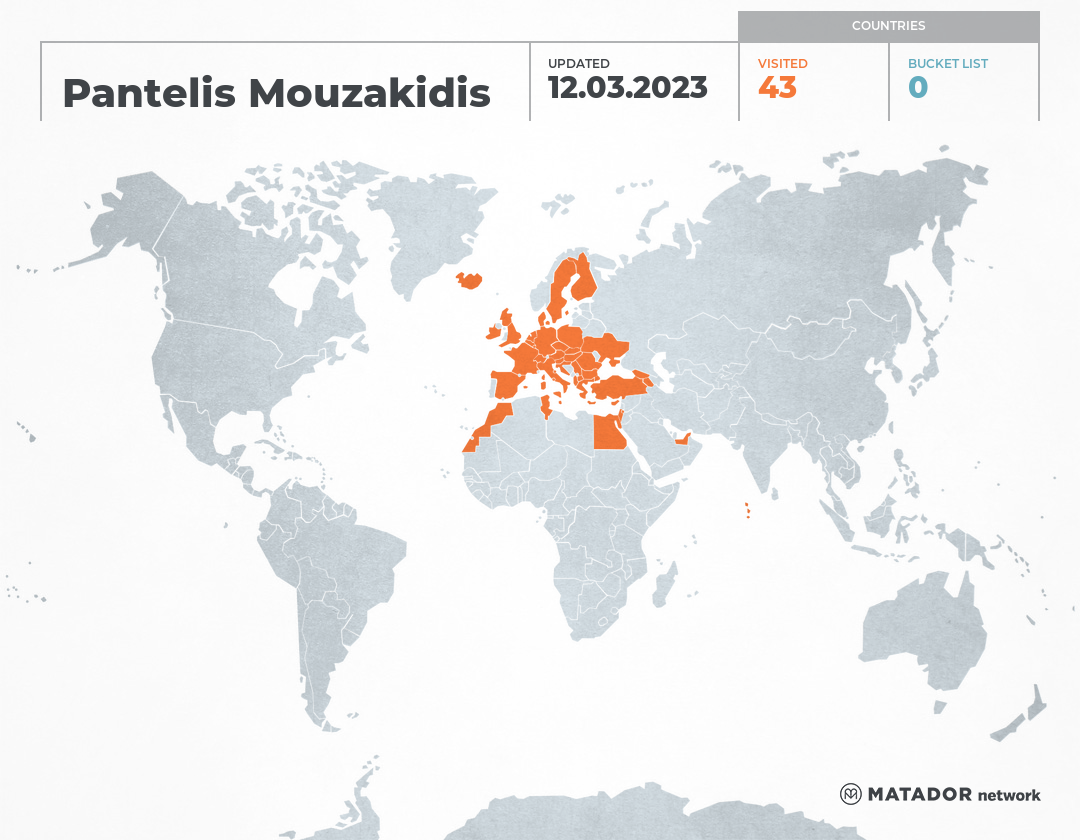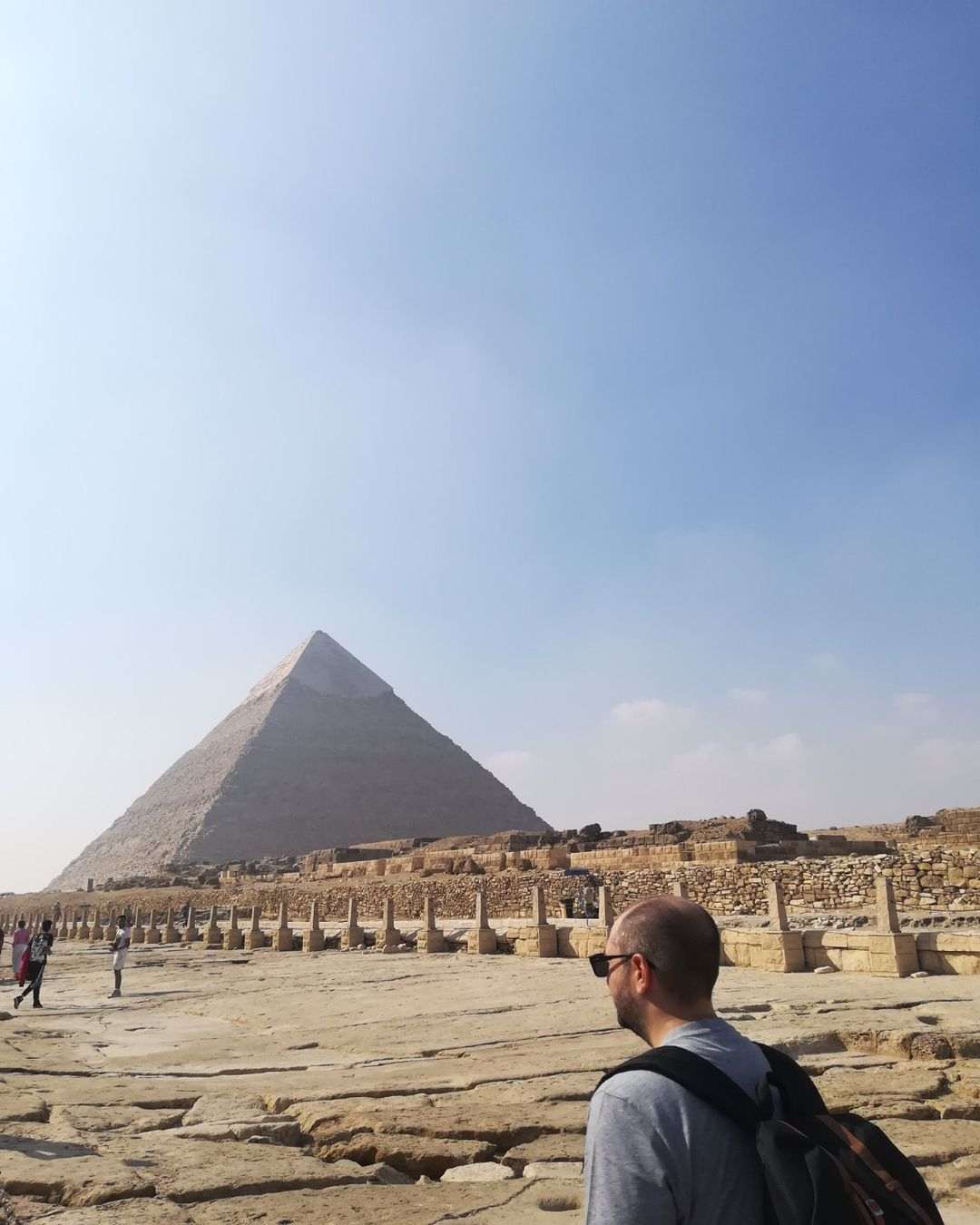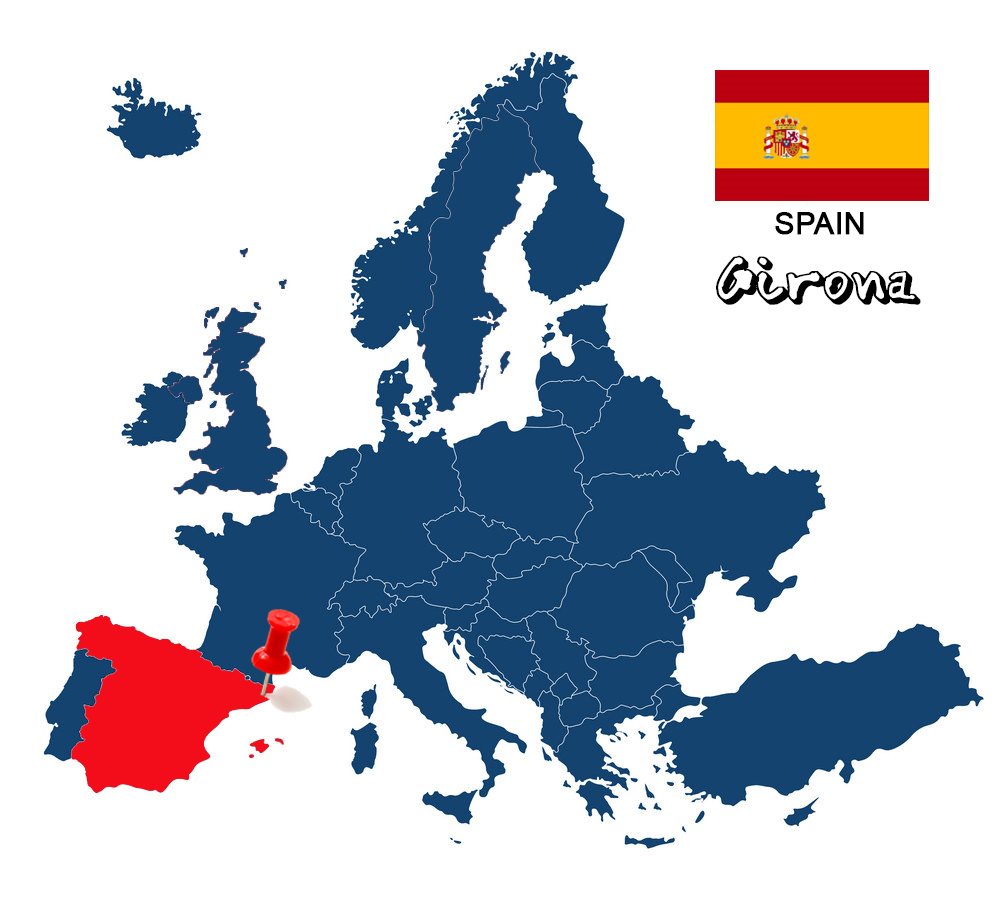
The largest city in northern Catalonia does not come to mind first when you listen for Spain, as it still remains one of the country's well-hidden secrets. Without the crowds of tourists, the atmospheric capital of the homonymous province transports you with characteristic ease to the medieval yesterday. Paved alleys, colorful houses, countless galleries, Gothic churches and museums are waiting to be discovered.
A few words about the city
Girona is a city of Catalonia, in northeastern Spain and capital of the province of the same name. It is situated at the confluence of the rivers Ter, Galigants, Honiar, and Guel, near the border with France, and numbers 96,722 inhabitants. It is considered one of the most beautiful towns of Catalonia, thanks to its geographical relief and rich historical center. Also, due to its position as a passage from the Iberian Peninsula to the rest of Europe, it has suffered many invasions and disasters during its existence. Although historical records refer to 25 confirmed raids that the urban area received, the Spaniards refer to Girona as the "city of 1,000 raids". Its name comes from the Latin Urbs Gerunda, meaning "City to be managed", a term born after the surrender of Girona by the local Iberian tribes to the Romans. Thus, unlike the other Roman cities of Catalonia, the name of Girona does not contain any Iberian lexicological element. I will try to introduce you to the city of the four rivers through my own eyes and share with you what I believe should be seen by someone who visits it for the first time.
Catedral de Girona
The Cathedral of Girona (Catedral de Girona) or as it is popularly known "Church of St. Mary of Girona", is the seat of the local diocese and at the same time one of the most historic sights of the city. It began to be built in 1312 to replace the oldest Roman temple of the 11th century, from which a tower ("the tower of Charlemagne", la torre de Carlemany) is preserved today and was finally completed in the middle of the 20th century. It is of Gothic style, with a single aisle 22 meters wide, which is the widest aisle of any style in the world, after that of St. Peter in the Vatican and the widest in a church of Gothic style. Entrance costs 7e and includes an acoustic tour of the interior of the temple, the bell tower and the monastery. In the Cathedral Square (Placa de la Catedral), apart from the church, remnants of the Roman wall are preserved.
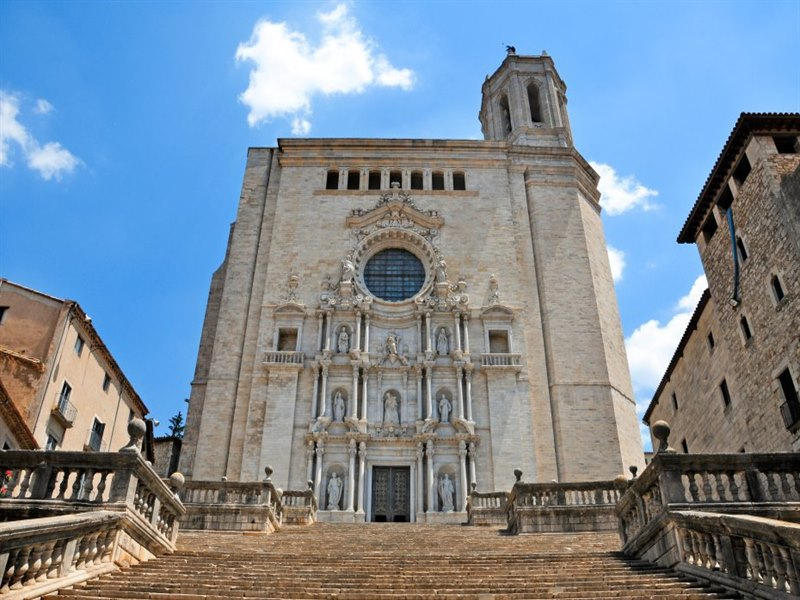
Onyar
The largest city of northern Catalonia is crossed by the river Onyar, separating its historical center with the modern quarter, forming one of the most beautiful and photographed spots of Girona. Around the river are built houses of various colors and sizes, which make up a very characteristic picture of the city. This picturesque neighborhood is called Cases de l'onyar, that is, Houses of Honiar and are all works of famous artists and architects, who aimed to enhance the idyllic air of the city (and achieved it). The balconies of the houses seem to float on the water, and their reflections create images that even the best painter could not draw.
Also, few people know that Gustav Eiffel, the man who built the well-known Eiffel Tower in Paris, has other famous creations. So before the construction that became a trademark of the City of Light, Eiffel had made another, smaller of course, work of art in Girona. I’m talking about the arch of the old fishmongers (Pont de les Peixateries Velles) or as it is popularly known, the Eiffel Bridge. This is an impressive red pedestrian bridge over Onyar, at the point where the four rivers meet. Although the city has eight bridges, this one is the most famous, mainly because of its creator.
Placa de la Independencia
The independence Square (Placa de la Independencia) is undoubtedly the heart of Girona. Designed by Marti Sureda on the site of the ancient monastery of Sant Agusti, I would say it has two faces, one in the morning and one in the evening. During the day, the open-air stalls are the protagonists, with art items, clothing, tourist items and the famous chocolate doughnuts, a trademark of the area. In the evening the square turns into a gastronomic paradise, with dozens of quality restaurants that will try to introduce you to Catalan cuisine. It is surrounded by beautiful mansions, while in its center is a monument (1894), commemorating the 1809 defenders of the city of Girona, a creation of the sculptor Antoni Parera.
Rambla de la llibertat
One of the most attractive places in the city is the street of freedom (Rambla de la llibertat). It is a narrow alley along the river Onyar, developed in the 13th century with the model of the street of the same name in Barcelona and characterized by its low-ceilinged arcades and uneven arches. It has dozens of small cafes, restaurants and shops, with the tree alley shading the passers-by, while it has long been the main shopping and entertainment center of Girona and includes many interesting buildings, such as Casa Norat, with its modernist facade (1912).
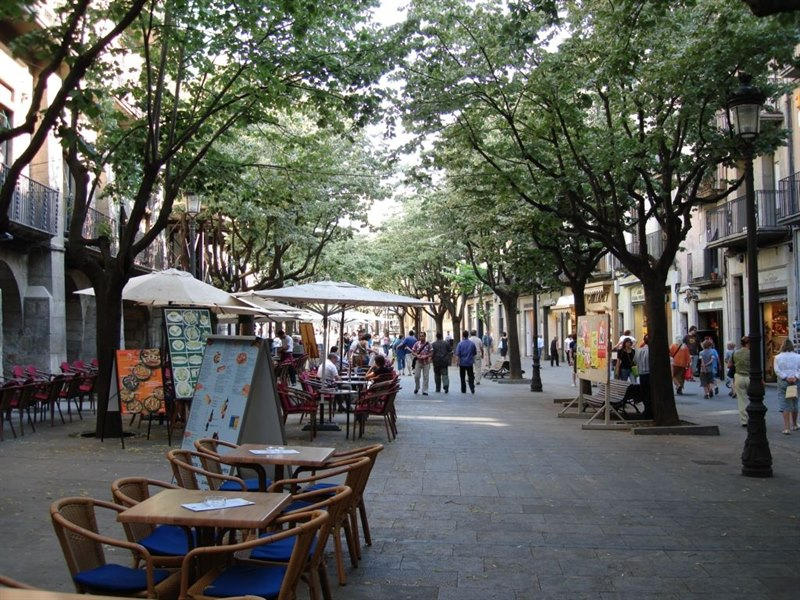
Passeig de la Muralla
Passeig de la Muralla (walking on the walls) is what is essentially left of the medieval city walls of Girona. It was initially made by the Romans, while there are pieces that date back to the 1st century BC! However, much of what we see today was built between the 9th and 17th centuries. To reach the point you have to climb a steep route, but the view will compensate you. Seven towers connect the walls, and some of them have wooden stairs to have an even better view of the city. However, if you are frightened of heights, you will not have to climb the towers, as the view from all levels is magical. Finally, if the weather permits, in addition to the panoramic view of Girona you will be able to enjoy the snow-capped peaks of the Pyrenees.
Banys Arabs
Right next to the Girona Cathedral, there is a small but impressive dome over a stone building. This structure is none other than the Arab baths (Banys Arabs). Is magnificent for the simplicity of its forms and, once, for the beauty of the play between light and darkness inside. The baths are Romanesque in style, but follow the model of Roman Baths, Arab baths and Jewish mikvas from a tradition that came back in the 11th century, with the development of urban areas and the need to improve hygiene. The building is divided into several rooms that allow one to move from the areas with the coldest water to those with the hottest. Guests enter through a small vestibule leading to the changing rooms, which is arguably the most iconic space in the baths, with an 8-sided central pool and eight columns crowned with beautifully decorated capitals. Until the 14th century, the building retained its activity as public baths. In the 20th century, the Arab baths were renovated to return them to their original appearance. Admission costs just 2e.
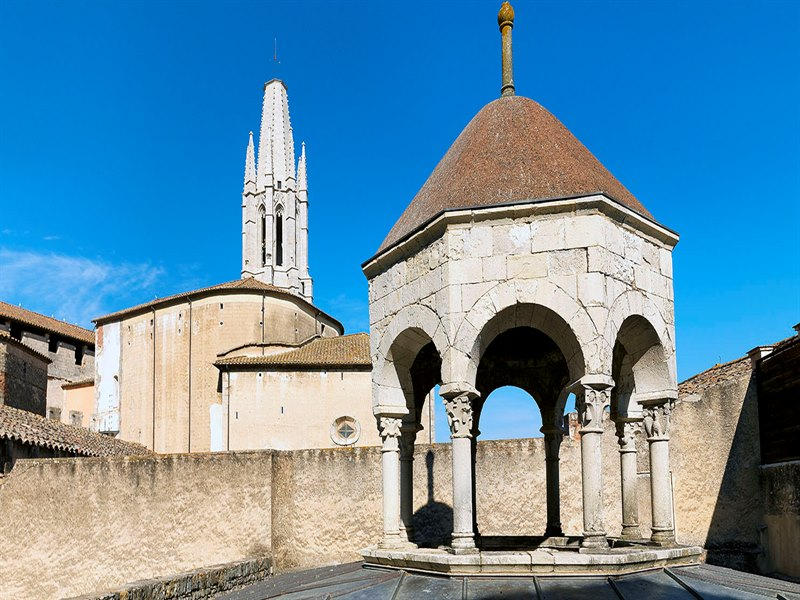
The museums
The first of the museums worth visiting in the city is the Art Museum of Girona (Museu d'art de Girona), founded in 1976 and located in the building of the Episcopal Palace, next to the cathedral. In the museum you can admire exhibitions that present the evolution of Girona through successive eras and styles such as Romanesque, Gothic, Renaissance, Baroque, realism, modernism and Nouchesitism. There are, in addition, halls dedicated to ceramics, glass and the art of universal liturgy, as well as halls with temporary exhibitions. The main collections are medieval, while interesting is the fact that the museum contains the 3rd largest collection of Romanesque and Gothic art in Catalonia. Admission costs 4.5e.
The Museum of Jewish history (Museu d'historia dels Jueus) aims to preserve and disseminate the history of the Jewish communities of Catalonia, which played a key role in the historical development of the city, as well as in the cultural and scientific development of the country. The building is located in the synagogue of the 15th century and has eleven rooms that are a trip to the Jewish Gerona of the Middle Ages, with various archaeological exhibits or documentaries and images. Admission costs 4e.
Ultimately, a stop at the Girona Cinema Museum (Museu del Cinema) seems imperative. This museum is one of the few in the world where you can take a trip to the 500 years of history of images, seeing the background and origins of cinema, as a technique and a visual spectacle, and get to know the principles of the seventh art up to arrival of the TV. The objects on display explain how images were portrayed before the cinema and what was the technical process that led to the invention of cinema in 1895. Admission costs 6e.
How to go
Thessaloniki is connected by air to Girona and Girona-Costa Brava Airport via Ryanair. With proper planning one can find tickets starting from 53€ round trip!
Where to stay
Girona is a medium-sized city in the shadow of Barcelona, which attracts tourist interest mainly during the summer months. So the accommodations that exist in the town, although not many, are of high quality and at affordable prices. Since all the attractions are in the city center, it would be wise not to go far from it. Therefore my suggestion is the Hotel Peninsular, a three star hotel, located in the city center, close to the cathedral and offering excellent value for money.
How to move
Although the main attractions and interest of Girona are concentrated in its historical center, which can be reached on foot, in the city, there is an excellent public transport system. Due to the size of the city, there is, of course, no metro, but you can use buses, since there are ten different routes that cover the whole city. Tickets can be obtained from the driver. Taxis are relatively cheap and can be found in many parts of the city, such as Placa Independencia and the Central Station.
What to eat
The Spanish cuisine and in our case the Catalan, combines wonderfully the mountain with the sea and its flavors are extremely close to Greeks. The dish you should definitely try is the famous Paella, which is essentially a pilaf made of rice and saffron, in which seafood and vegetables are typically combined. An excellent choice to try is the legendary Casa Marieta, which has been operating since 1890. A special place in the diet and culture of the Spaniards, of course, moreover have the notorious tapas. Tapas are not a specific dish; I could only describe it as our own appetizers. It is traditionally a slice of bread that has something on top (cheese, chorizo, omelet, risotto, boiled potato etc.). The best you will find in Lizarran. Plus, as I mentioned above, the trademark for Girona is the chocolate donuts, while finally, since you are in Spain, do not forget to try Sangria, a red wine with chopped fruits and often juice, but also ingredients such as orange and cognac.
Useful information

In Spain we travel with a passport or a new type of Police ID, where the details are indicated in Latin characters.
In Girona the language used is, of course, Spanish and more specifically a dialect of it, Catalan. This means that communication is a little bit difficult, since English is a language unknown to Spaniards, let alone Catalans! However, with a little goodwill, anything is possible.
The currency of the country is the euro.
Girona is an hour behind Greece (GMT +2).
Getting to and from Girona Airport is simple, since some continuous bus services will take you to the city center.
In Girona there is no Greek embassy or any Greek consulate so if you require anything you should contact the nearest one, located in Barcelona and more specifically at 6 Calle Freixa Street, 08021 and its phone is (0034) 93 2002036.
The climate in Girona is very similar to that of Greece, with mild winters and warm summers. So the ideal period of Visit is summer, so that you can enjoy the glorious beaches and idyllic locations.
Recommended excursions → Barcelona, Figueres, Zaragoza

If this article seemed interesting or contributed to your quality information, then you can like my facebook page: o_thessalonikios or follow me on instagram!
Mouzakidis Pantelis






